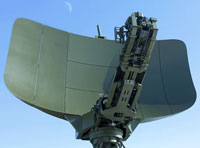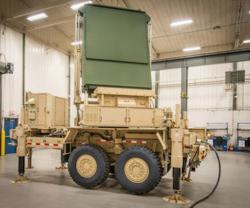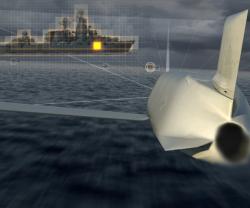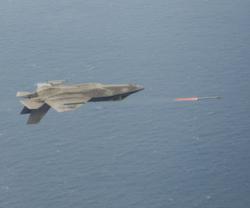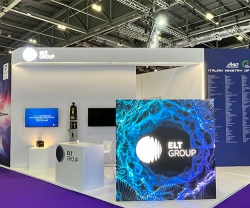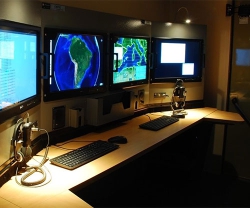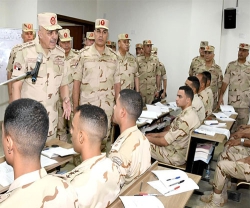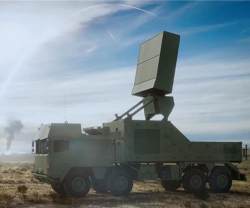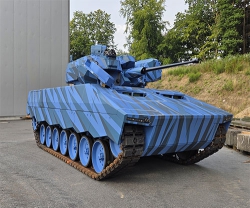Lockheed-ARINC Bid for USAF Rapid Deployment ATC Radar
31.07.2012 North America
Industry team Lockheed Martin and ARINC has submitted its proposal for a new, transportable Air Traffic Control (ATC) radar system that will enable U.S. Air Force and Air National Guard units to quickly establish tactical military or disaster-relief airfield operations around the world.
Under its Deployable Radar Approach Control (D-RAPCON) program, the Air Force will procure 19 ATC surveillance radar systems, which can deploy within 48 hours worldwide by C-130 aircraft and take less than six hours to set up. The total program value is expected to be more than $400 million.
“Our bid carefully balances the service’s need for off-the-shelf products that reduce risk in a budget constrained environment. We have been designing and manufacturing transportable radars for decades with more than 100 systems deployed around the world today,” said Greg Larioni, Vice President of Radar Surveillance Systems at Lockheed Martin’s Mission Systems & Sensors business.
The Lockheed Martin-ARINC team’s solution integrates field-proven systems, including Lockheed Martin’s TPS-79 tactical surveillance radar and Microprocessor-En Route Automated Radar Tracking System (Micro-EARTS), and ARINC’s transportable ATC operations shelter.
To date, Micro-EARTS is the only ATC display system certified by the Federal Aviation Administration (FAA) for providing both terminal and en route ATC automation capabilities at FAA and Department of Defense operational sites, as well as for currently deployed Air Force expeditionary ATC systems.
The Air Force’s D-RAPCON program will replace aging and difficult to maintain ATC systems in service, including the more than 40-year-old AN/TPN-19 landing control center. Ten D-RAPCON systems will go to the Air National Guard, seven to active-duty Air Force Space Command units, and one each to the Air Force’s ATC school and depot.
Under its Deployable Radar Approach Control (D-RAPCON) program, the Air Force will procure 19 ATC surveillance radar systems, which can deploy within 48 hours worldwide by C-130 aircraft and take less than six hours to set up. The total program value is expected to be more than $400 million.
“Our bid carefully balances the service’s need for off-the-shelf products that reduce risk in a budget constrained environment. We have been designing and manufacturing transportable radars for decades with more than 100 systems deployed around the world today,” said Greg Larioni, Vice President of Radar Surveillance Systems at Lockheed Martin’s Mission Systems & Sensors business.
The Lockheed Martin-ARINC team’s solution integrates field-proven systems, including Lockheed Martin’s TPS-79 tactical surveillance radar and Microprocessor-En Route Automated Radar Tracking System (Micro-EARTS), and ARINC’s transportable ATC operations shelter.
To date, Micro-EARTS is the only ATC display system certified by the Federal Aviation Administration (FAA) for providing both terminal and en route ATC automation capabilities at FAA and Department of Defense operational sites, as well as for currently deployed Air Force expeditionary ATC systems.
The Air Force’s D-RAPCON program will replace aging and difficult to maintain ATC systems in service, including the more than 40-year-old AN/TPN-19 landing control center. Ten D-RAPCON systems will go to the Air National Guard, seven to active-duty Air Force Space Command units, and one each to the Air Force’s ATC school and depot.
Latest news
Latest events
DSEI 2025
09 - 12 Sep 2025Excel, London - United KingdomCounter UAS Middle East & Africa 2025
16 - 17 Sep 2025Amman - JordanIntersec Saudi Arabia
29 Sep - 01 Oct 2025Riyadh International Exhibition & Convention Centre - Saudi ArabiaDubai International Air Chiefs’ Conference (DIACC 2025)
16 Nov 2025Atlantis, The Palm Dubai - United Arab Emirates

